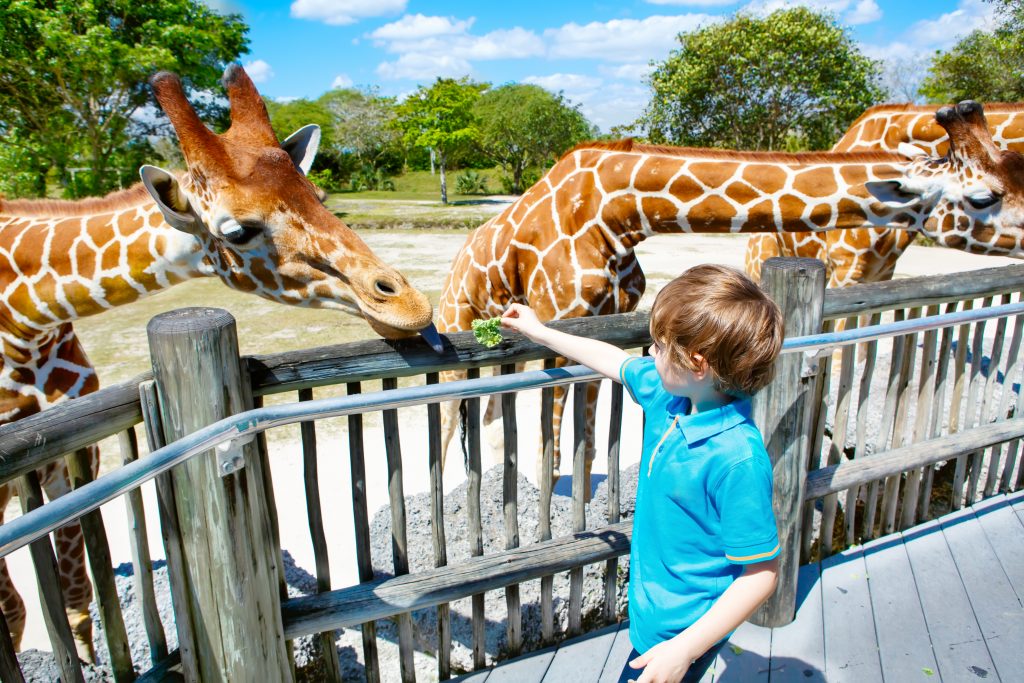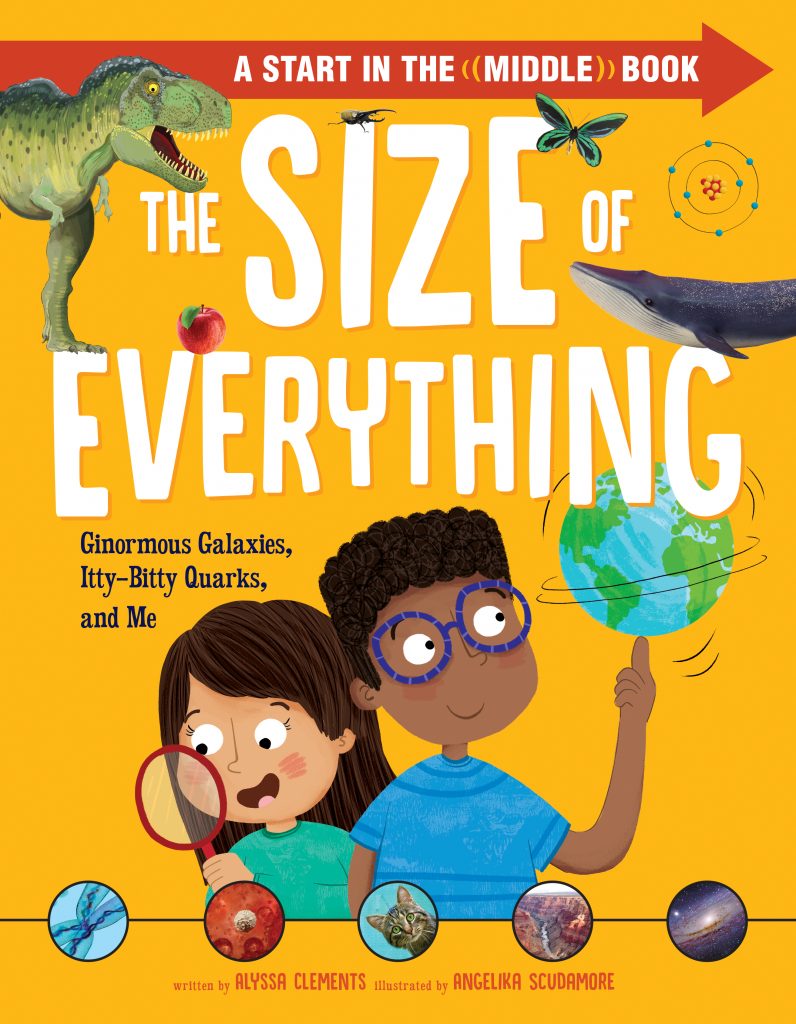By Alyssa Clements, author of the book The Size of Everything
Science is one of the easiest tools for helping children encounter God. God’s world is incredible, and as they study it, our kids are guaranteed to come across facts that will blow their minds and capture their imaginations.
During my time as a third-grade teacher, my favorite subject to teach was astronomy. I absolutely loved being able to introduce my students to the hugeness and intricacy of the stars, planets, and galaxies, and I loved watching them wrestle with the vastness of it all. Our lessons were filled with opportunities for me to take the ”wow” moments and ask my students to consider how powerful and fun God must be as the creator of it all.
But the study of science isn’t meant to be contained to the school classroom. Encouraging our kids to develop a scientific mindset and worshipful heart in response to God’s world starts in our homes when our kids are very young.
Here are four easy, practical rhythms that you can begin to implement which will make your home a place of imagination, curiosity, and worship and will help your children of all ages to know God better through the study of his world.
Engage the Questions
I don’t know about your kids, but from the age of three, my kids have seemed to be filled with a never-ending stream of questions. In fact, just this morning on the way to school, my five-year-old randomly asked me if the blood in our bodies ever stops moving.
Kids are naturally curious, and as their parents, we have the immense privilege of being privy to much of their inner wonderings. We are the ones that they bring their questions to, and the way that we respond to them either sparks further curiosity or dampens it.
Now I know that when you’re answering your seemingly two hundredth question in a row or the questions are coming right before bedtime (as they so often do), it’s easy to brush past them and not really engage. Unfortunately, our children’s questions are rarely convenient, but neither is the work of parenting. If we truly want our children to know and love God and his world, it’s important that we take advantage of every opportunity to point them to him. And their questions are a perfect avenue to do just that.
We don’t need to have all the answers, but when we seriously engage their questions, we show that God’s world is worth wondering about. So the next time you are tempted to answer your child’s “why?” with a simple “because,” consider if there’s an opportunity to use your response to model curiosity and teach them a little bit more about God’s world. Because if we stop considering their questions, they will stop asking them, and we will quickly miss out on an easy way to turn their hearts towards God.
Get Outside
God’s natural creation is an incredible gift to us. While being beautiful and refreshing our bodies and minds, the outdoors also has holds so many invitations to encounter its creator.
When you get outside with your kids, be intentional about modeling curiosity and pointing out cool things that you see. The things can be big, such as majestic sunsets, towering mountains, and shimmering lakes—but small things, such as a curling leaf on a fall walk or a bushy-tailed squirrel running across the street, also hold such potential for discussing God’s whimsy and presence in the world. A small comment, like “Isn’t this leaf so cool?”, can easily transition to “Isn’t God so cool to have put so many colors in one leaf?” Just keep inviting God into your conversations about nature and you may be amazed at how quickly your children start noticing God’s work in the world on their own.

Read Nonfiction Books
We all love a good story, and while there is definitely a place for fiction in the reading life of your family, many children miss out on the richness of nonfiction books because nonfiction often doesn’t lend itself as naturally to bedtime read-alouds. But nonfiction books are wonderful for feeding curiosity and building foundational knowledge of how God’s world works. Children love to accumulate facts, and nonfiction books allow children to dive into their interests, whether they be rocks, giraffes, or airplanes, and to learn facts related to those interests.
Many nonfiction books are also great “stumble-upon” books. “Stumble-upon” books are ones that children can explore on their own and stumble upon information independently of adults. Since many nonfiction books are not stories, children can open them up to any page and read as much or little as they want before putting them away. They can then come back to them over and over again, each time with full control of how they experience them. For kids who struggle with reading in a traditional sense, this power over their reading experience can make reading more enjoyable. And as we know, children who love to read often love to learn, and children who love to learn will be more likely to approach God and his world with curiosity and experience his revelation. So seek out nonfiction books, particularly those related to science!
Don’t Be Afraid of Science
Saint Augustine famously said, “All truth is God’s truth.” Although they are often pitted against each other, faith and science go hand in hand, held together by the God the creator and redeemer of the world. At its heart, the study of science is the study of God.
So as Christians, we do not need to be afraid that by asking scientific questions, we will harm God or show that he is inconsistent. He is the one who created everything perfectly, and he and his creation can stand up to our questions and scientific discoveries. Colossians 1:16-17 talks about how everything has been created “through [Jesus] and for him” and that “he holds all creation together.” While we might not understand how it all works, we can hold fast to the belief that he holds it all together, and that science studies how he has chosen to do so.
For this reason, we can come to scientific study with both eagerness and deep humility, knowing that we, and all scientists, are limited in our knowledge of how and why God acts. So when your paleontology-enthused daughter ask you how and when the dinosaurs went extinct or your rock-collecting son asks you why it takes millions of years for sedimentary rock to form, you can give a scientific explanation and also say, “But more importantly than anything else, we know that God is the one who created everything and he knows exactly why and how it works.” We can hold science and the Bible together because we know that they are not contradictory; instead, they are both revealing pieces of God and his work in the world, and we need to be content to confidently know that they fit together, although we will not understand exactly how.
Science gives us an opportunity to study diligently to try to understand and then to ultimately trust God’s sovereignty and respond in awe and worship of our big, powerful, mysterious God. When you choose to adopt this posture with your children, you can find freedom in reading a wide variety of nonfiction books, visiting museums, watching documentaries, and conducting experiments because you know that by holding to a foundation of God as creator and sustainer of the created world, you can courageously and faithfully seek him through scientific study. You’re not going to discover anything that isn’t somehow consistent with God, his character, and his work in the world.
You might be interested in
The Size of Everything by Alyssa Clements
This one-of-a-kind, faith and science picture book starts in the middle with the size your child knows best—their own body! Turn the pages to the left or right to discover big and small creations and science facts about God’s incredible world.
God created ginormous galaxies, itty-bitty quarks and everything in between—including humans. The Size of Everything captures the magnitude of God’s creation by setting everything on a size scale. Readers start in the middle with the size of an eight-year-old child and have the option to turn the pages to the left and explore cells, plants, and animals that are smaller than them. Or they can turn the pages to the right to discover creatures, landmarks, and planets larger than they can imagine! Best of all, children will see God’s power and creativity in all of creation.
What’s Inside?
- A one-of-a-kind book that starts in the middle
- Over 45 fantastic creations (atoms, cells, animals, plants, landmarks, planets, etc.)
- Over 80 brilliantly colorful illustrations and highly detailed photos
- Over 100 mind-blowing science facts, educational call outs, and funny tidbits
- A giant size index along the bottom of each page for children to track their progress
It’s a perfect faith and science resource for reading at home or an educational resource for home schools, Christian schools, and Sunday school classrooms.
About the Author
Alyssa Clements is a third-grade teacher turned book editor who loves learning about the fascinating world God has created and exploring how it all points back to him. Alyssa lives in West Chicago, Illinois, with her husband, Forrest, and her two wonderfully curious children.



